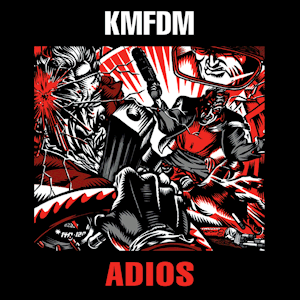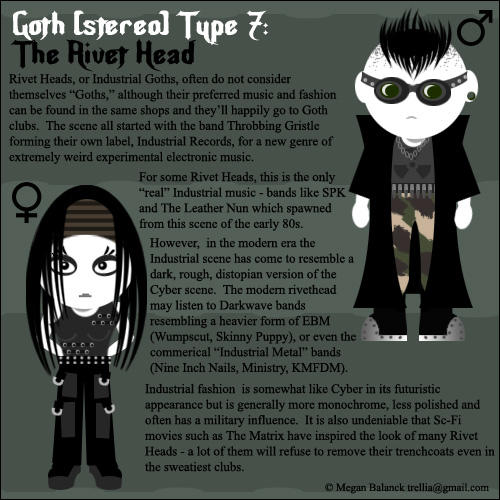INDUSTRIAL MUSIC
Industrial music is one of the most diverse corners of alternative sound. While most of it can be classified as electronic-adjacent, plenty of industrial bands broaden their horizons by dabbling in other genres. On top of that, there are also bands who maintain a consistent sound in another genre — typically rock — but tap into their industrial impulses in a portion of their music.

For example, A Perfect Circle are recognized as an alternative rock band, but lots of fans and casual listeners like to say they have plenty of industrial influences. This makes sense, as the frontman is Maynard James Keenan, who is also the frontman and lyricist for Tool (an extremely popular industrial rock band). Tracks like Gimme Gimme Gimme
from the eMOTIVe album show the influence through the way the instrumentals carry along.
Alongside A Perfect Circle is Static-X, an industrial metal band. In their hit song Push It
from their Wisconsin Death Trip album, there are plenty of metallic sounds sprinkled in the instrumentals. If you listen closely each time Wayne Static sings, "You push it!" there's a sound akin to that of a hammer hitting a pipe.

Then, of course, there are bands that are pretty true to the industrial genre, not straying too far from their electronic roots, such as Skinny Puppy or ohGr, both fronted by Nivek Ogre, a popular performance artist in the rivethead1 scene.
One of the most popular industrial bands is KMFDM, founded by Sascha Konietzko in 1984 as a performance-art project. Most of their music deals with political issues, ranging from school shootings ("Me And My Gun") to being anti-war ("A Drug Against War"), earning them their fame when "Dogma" started gaining popularity, a track which criticizes the misery of average people who are constantly seeking stimulation to avoid inevitable (and very much needed) boredom. Keep in mind, this track was released in 1996, way before apps like TikTok could be blamed for our deteriorating attention spans!

After KMFDM's release of their album Adios in 1999 coincided with both the Columbine High School massacre and Adolf Hitler's birthday, Sascha Konietzko issued the following statement in response to backlash, clarifying the band's message in their music:
“KMFDM are an art form—not a political party. From the beginning, our music has been a statement against war, oppression, fascism and violence against others. While some of the former band members are German as reported in the media, none of us condone any Nazi beliefs whatsoever.” 2
Thus, solidifying their culturally alternative agenda.

Rivethead Culture
The term rivethead originated in the 1940s to describe those who worked in the automotive assembly line, though was reclaimed (by what were previously called industrialists) in 1993 thanks to Glenn Chase, who created a compilation called "Rivet Head Culture" which featured acts from various bands within the underground industrial/EBM scene.
Within the same year of the compilation's release, the now-popular band Chemlab had debuted with their album Burn Out At The Hydrogen Bar, which also featured a song called "Rivet Head."
Because of the similarities, rivetheads are often confused for typical goths. The fashion subculture is often misnamed as "industrial goth" or even "military goth," as most rivetheads emulate uniforms, dressing up in buttons, badges, epaulettes, and peak caps.

Rivethead fashion totally crosses into kink and BDSM territory as well, adorning what could be considered fetish wear—latex mini skirts, tall heels, fishnets, etc.—likely influencing cybergoth³, as both were born from electronic-adjacent scenes, though cybergoth is more "bouncy" and fit for a rave.


Summary
Industrial music is categorized by its mechanical, robotic, and abrasive sound, often crossing over with genres such as rock, metal, electronica, and avant-garde experimentation. Most industrial artists, such as KMFDM, create music that brings attention to uncomfortable or taboo topics, such as school shootings, war, and technology. Industrial fans, previously called "industrialists," coined the term "rivethead," and began dressing in a distinctive militaristic-gothic-kinky style as the scene rose from the ground up.
Superscripts
1 Rivethead, noun — A term for individuals who listen to industrial music and are part of its subculture; analogous to labels like goth or emo.
2 Source — KMFDM Official Website Update, 1999 (archived)
3 Cybergoth, noun — A subculture that mixes traits from raver, rivethead, cyberpunk, and goth fashion. Likely popularized in 1990s-00s.
disclaimer: community contributed content

